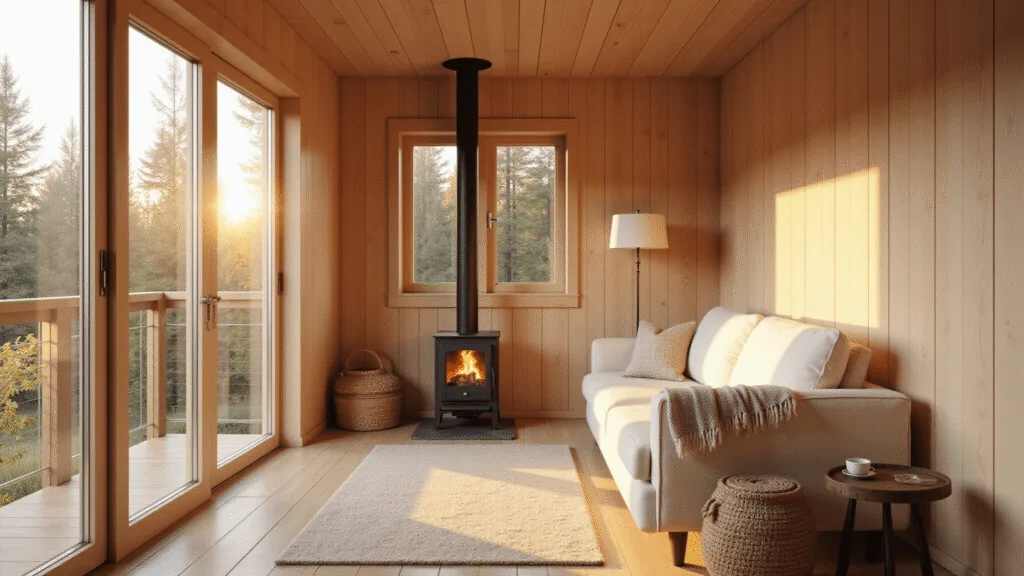Embracing Japandi: Where East Meets North in Perfect Harmony
I’ve been obsessed with Japandi decor since I first encountered this fusion style three years ago. It completely transformed how I approach my living spaces. This beautiful marriage of Japanese minimalism and Scandinavian hygge creates environments that are both functional and soul-soothing.
If you’re tired of visual noise and craving a home that feels like a genuine sanctuary, Japandi might be your perfect match.
What Exactly Is Japandi Decor?
Japandi decor combines the best elements of Japanese minimalism and Scandinavian design principles.
Think clean lines, natural materials, and functionality—but with warmth that prevents spaces from feeling sterile or cold.
The beauty lies in its contradictions: it’s minimal yet cozy, sleek yet organic, carefully curated yet somehow effortless.
I remember walking into my first properly executed Japandi space. The immediate sense of calm was almost physical—like someone had turned down the volume on life’s constant noise.
The Core Elements of Japandi Style
Color Palette
Stick with these foundational colors:
- Base colors: Soft whites, warm beiges, gentle grays
- Accent colors: Muted sage green, terracotta, charcoal
- Wood tones: Light to medium (never orange-tinted)
I made the rookie mistake of including too many bright colors when I started. Trust me—restraint is your friend here.
Materials That Matter
The soul of Japandi lies in natural, tactile materials:
- Wood: Unfinished or lightly sealed ash, oak, walnut
- Textiles: Linen, cotton, wool, raw silk
- Accent materials: Ceramic, stone, rattan, bamboo
In my living room, I paired a low-profile walnut coffee table with a hand-knotted wool rug. The textural contrast creates visual interest without needing busy patterns.
Furniture Characteristics
Key features to look for:
- Low profiles (especially for seating)
- Clean, simple lines
- Visible craftsmanship
- Multi-functionality
- Natural finishes
My favorite piece is a low-slung platform bed frame I found secondhand and refinished. The natural wood grain shows through the matte finish, creating that perfect wabi-sabi imperfection.
Setting Up Your Japandi Space: A Step-by-Step Guide
Step 1: Declutter Ruthlessly
Japandi spaces demand breathing room. I spent a full weekend sorting through my belongings before starting my transformation.
Quick decluttering rules:
- If it doesn’t serve a purpose or bring genuine joy, it goes
- No “maybe” pile allowed
- Store seasonal items out of sight
- Limit decorative objects to those with personal meaning
Step 2: Establish Your Base Canvas
Create a neutral foundation:
- Paint walls in warm whites or soft grays
- Select flooring in natural materials when possible
- Install simple window treatments (bamboo blinds work beautifully)
I painted my living room in Farrow & Ball’s “School House White”—a soft, slightly warm neutral that creates the perfect backdrop.
Step 3: Choose Anchor Furniture
Select key pieces that embody Japandi principles:
- A low-profile sofa in natural linen or wool
- Simple dining table in solid wood
- Platform bed (if styling a bedroom)
- Storage pieces with clean lines
Budget tip: Second-hand Danish or Japanese furniture often fits perfectly with Japandi style and costs significantly less than new pieces.
Step 4: Layer Textiles Thoughtfully
Add comfort through carefully chosen textiles:
- Linen curtains that puddle slightly on the floor
- Wool or jute area rugs with simple patterns
- Cotton or linen throw pillows in muted tones
- Cashmere or wool throws for cold weather months
I change my textiles seasonally: linen in summer, wool in winter, maintaining the same color palette year-round.
Step 5: Incorporate Thoughtful Accessories
Select a limited number of meaningful items:
- Handmade ceramic vessels
- Bamboo or wooden trays
- Simple artwork in natural frames
- 1-2 houseplants in textured pots
The rule of three: I never display more than three decorative objects on any surface. This prevents visual clutter while still allowing personality.
Japandi on a Budget: Yes, It’s Possible!
Smart Shopping Strategies
- Thrift stores: Look for solid wood furniture with clean lines
- Facebook Marketplace: Search for “Scandinavian” or “Japanese” furniture
- Discount retailers: H&M Home and IKEA often have Japandi-appropriate basics
DIY Projects That Work
- Sand and refinish vintage wooden furniture
- Sew simple linen cushion covers
- Create wall art using Japanese ink techniques
- Make macramé plant hangers for added texture
My proudest achievement was transforming a chunky pine coffee table into a sleek Japandi piece with just sandpaper, wood stain, and patience.
Common Japandi Decorating Mistakes
Mistake #1: Too Many Decorative Objects
Solution: Edit ruthlessly. If it doesn’t serve a purpose or hold significant meaning, it doesn’t belong.
Mistake #2: Missing Warmth
Solution: Incorporate natural textures like wool throws, linen pillows, and wooden accessories to prevent the space from feeling stark.
Mistake #3: Poor Lighting Choices
Solution: Layer lighting with paper lanterns, simple sconces, and minimal floor lamps. Avoid harsh overhead lighting.
Mistake #4: Ignoring Negative Space
Solution: Embrace emptiness as an intentional design choice. Not every wall












